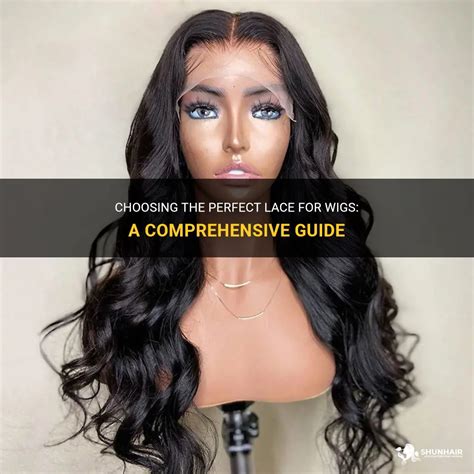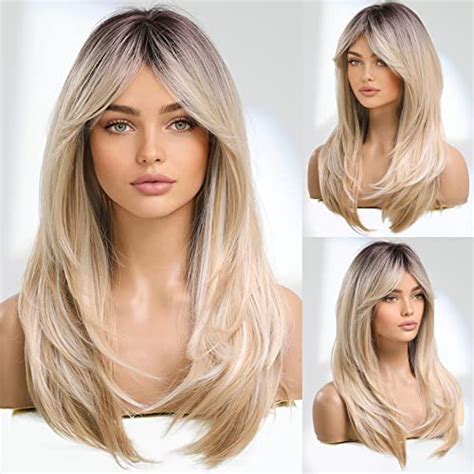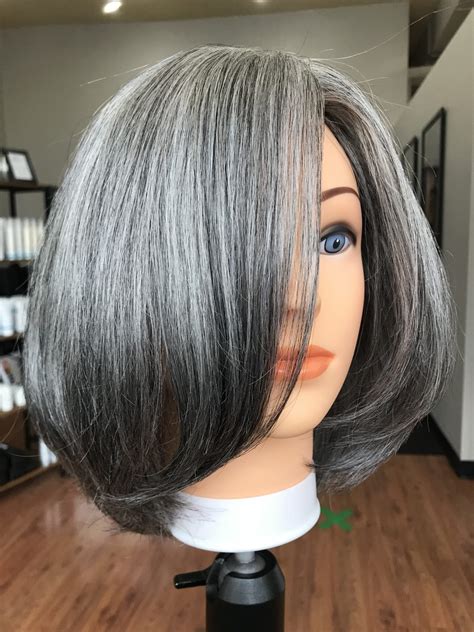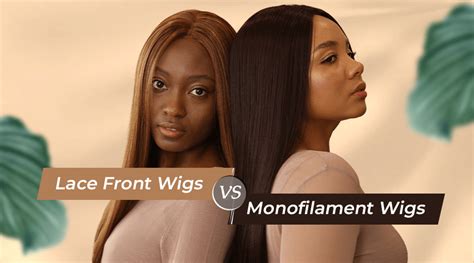Wigs: A Comprehensive Guide to Covering and Enhancing
As of 2025, the global wig market is projected to exceed $9 billion, driven by increasing fashion consciousness and the desire for instant hair transformations. Wigs offer various benefits, from concealing hair loss to experimenting with different styles, leading to their growing popularity. However, choosing the right wig can be overwhelming, especially considering the diverse options available.
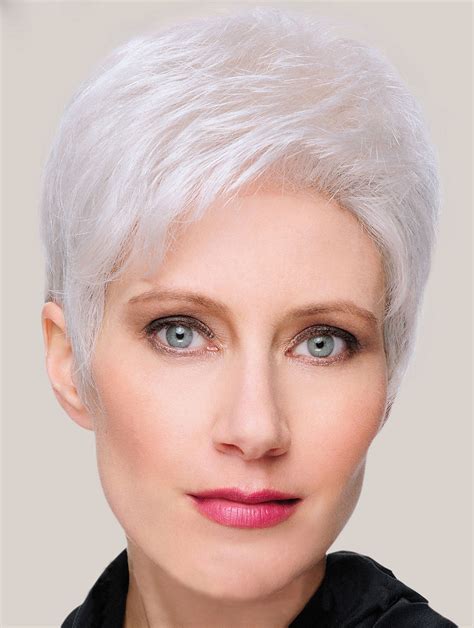
Natural vs. Synthetic Wigs
Natural wigs are made from human hair, providing a realistic look and feel. They are breathable, comfortable, and can be styled with heat tools. However, they are more expensive and require professional maintenance.
Synthetic wigs, on the other hand, are made from artificial fibers like nylon or polyester. They are affordable, easy to care for, and come in a wide range of colors and styles. However, they can feel less natural and may not withstand heat styling.
Comparison Table: Natural vs. Synthetic Wigs
| Feature | Natural Wig | Synthetic Wig |
|---|---|---|
| Material | Human hair | Artificial fibers |
| Look and feel | Realistic, breathable | Synthetic, less natural |
| Cost | More expensive | Affordable |
| Maintenance | Requires professional care | Easy to care for |
| Heat resistance | Can be styled with heat | May not withstand heat |
Lace Front vs. Capless Wigs
Lace front wigs feature a sheer lace cap that creates the illusion of a natural hairline. They offer a discreet and undetectable appearance, making them popular for high-end fashion and entertainment.
Capless wigs are made without a lace cap, resulting in a more affordable option. They are lightweight and breathable, but they may not provide as natural a look as lace front wigs.
Comparison Table: Lace Front vs. Capless Wigs
| Feature | Lace Front Wig | Capless Wig |
|---|---|---|
| Hairline | Sheer lace cap, natural appearance | No lace cap, visible wig line |
| Cost | More expensive | Affordable |
| Comfort | Less breathable | More breathable |
| Durability | More fragile | More durable |
| High-end applications | Fashion, entertainment | Everyday wear |
Wig Types and Applications
Wigs come in a variety of styles and types, each with unique benefits and applications.
- Full lace wigs: Fully hand-tied with lace, providing 360-degree versatility for styling and parting. Ideal for creating intricate updos.
- 360 lace wigs: Similar to full lace wigs, but the lace extends around the perimeter, leaving a small un-laced area at the crown. Offers flexibility while concealing the back.
- HD lace wigs: Made with a transparent lace that matches most skin tones, resulting in an exceptionally natural look. Popular for high-end fashion and special occasions.
- Transparent lace wigs: Features a sheer and delicate lace that blends seamlessly with all skin tones. Ideal for creating the illusion of a natural scalp.
- Monofilament wigs: Constructed with a thin, breathable material that creates the appearance of realistic hair growth. Suitable for individuals with sensitive scalps or hair thinning.
Tips and Tricks for Choosing the Perfect Wig
Selecting the right wig involves considering factors such as hair texture, face shape, and personal style. Here are some tips:
- Match your hair texture: Choose a wig with a texture that closely resembles your natural hair to achieve a natural blend.
- Consider your face shape: Oval faces suit most wig styles, while round faces look best with asymmetrical wigs that elongate the face. Square faces benefit from wigs with soft layers and volume, while heart-shaped faces look flattering with long, side-swept bangs.
- Experiment with different styles: Don’t be afraid to try various wig styles to find what suits you best. Remember, wigs can be customized to create unique and personalized looks.
- Consult a professional: A wig stylist can provide expert advice and assist in choosing the ideal wig for your specific needs and preferences.
Pros and Cons of Wigs
Pros:
- Conceals hair loss: Wigs offer a non-surgical and temporary solution for individuals experiencing hair loss due to medical conditions or alopecia.
- Enhances appearance: Wigs can instantly transform hair into a fuller, more lustrous, and stylized look.
- Protects hair: Wigs can protect natural hair from damage caused by harsh chemicals, heat styling, and environmental factors.
- Experimentation: Wigs provide a safe and fun way to experiment with different hairstyles and colors without committing to a permanent change.
Cons:
- Maintenance: Wigs require regular maintenance, including washing, styling, and storage, which can be time-consuming.
- Cost: High-quality wigs can be expensive, especially natural wigs and custom-made pieces.
- Comfort: Some wigs may cause discomfort, especially if worn for extended periods or in hot weather.
- Unrealistic: Cheap or poorly constructed wigs may appear unnatural and detract from the overall look.
Reviews of Popular Wig Brands
- Jon Renau: Known for high-quality, natural-looking wigs in a wide range of styles and colors. Reviewers praise the durability and comfort of their wigs.
- Raquel Welch: Offers a variety of wigs designed for both fashion and everyday wear. Reviewers rave about the wigs’ versatility and ease of styling.
- Wiggins: Specializes in custom-made wigs tailored to individual needs. Reviewers highly recommend the company’s attention to detail and customer service.
- Hairdo: Provides affordable wigs in a range of styles and colors. Reviewers appreciate the wigs’ easy maintenance and value for money.
Market Insights: The Future of Wigs
The wig market continues to expand rapidly, driven by technological advancements and changing consumer preferences. Here are some key insights:
- Increasing demand for synthetic wigs: Synthetic wigs are gaining popularity due to their affordability, ease of care, and wide range of style options.
- Growth of online wig sales: The convenience of online shopping has led to a surge in wig sales through e-commerce platforms.
- Advancements in wig technology: Innovations such as heat-resistant synthetic fibers and breathable caps are enhancing the comfort and durability of wigs.
- Celebrity endorsements: Celebrities and influencers are increasingly using wigs to create bold and experimental looks, driving consumer demand.
How to Stand Out in the Wig Market
In the competitive wig industry, differentiation is key to success. Consider implementing the following strategies:
- Offer niche products: Cater to specific customer groups by offering specialized wig styles, such as wigs for medical hair loss or wigs designed for drag performers.
- Emphasize customization: Allow customers to customize their wigs with features like hand-tied knots, adjustable straps, and personalized colors.
- Leverage technology: Utilize virtual try-on apps or AI-powered recommendations to enhance the customer experience and showcase your wigs effectively.
- Exceptional customer service: Provide personalized support and after-sales care to build customer loyalty and positive word-of-mouth.
- Ethical sourcing and sustainability: Demonstrate commitment to ethical sourcing and sustainable practices to appeal to environmentally conscious consumers.
Conclusion
Wigs have become a transformative tool, empowering individuals to enhance
